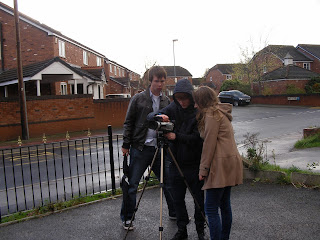
We got people from our target audience to view our documentary and print advert and listen to our radio advert to provide feedback, so that we could assess the success of our work. We produced another questionnaire of fifteen questions; five questions on each of the three arctefacts that we had produced and distributed the questionnaire to people that had seen or heard them to recieve a wide spread of feedback. The audience feedback questionnaire can be seen above.
For the documentary video, people said that the narration was clear and suitable enough, although there were some comments about there being too much narration but otherwise there was not much criticism and people thought that overall the documentary had a good flow with a clear narrative. Our earlier questionnaire had shown that our target audience would've preferred a male narrator to a female one and we took this into consideration when selecting our narrator; something that was praised in our audience feedback. Nobody thought that the documentary was particularly biased and understood that we focused more on takeaways such as Chinese and Indian over ones like Thai and Mexican as they were more popular as seen in our earlier questionnaire results. People thought that the font was clear and relevant and that the music fitted the theme of the documentary.
Feedback on our radio advert was mixed, with most people saying that they could hear and understand the narration but that the music was louder than it in some cases and gave them some difficulties. People said that the radio advert conveyed the desired message of the scheduling and did make them more interested to watch the actual documentary, rendering it a success.
People thought that the print advert was effective, and despite many people saying that it was quite plain that they said the use of a single image was effective and eyecatching and that it made them want to watch the documentary. People said that the font and its colour scheme were relevant, but after some criticsm of our original tagline for being too misleading we changed it to something more suitable.




























































